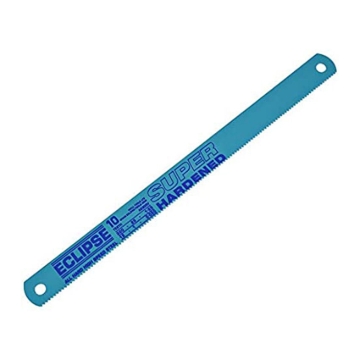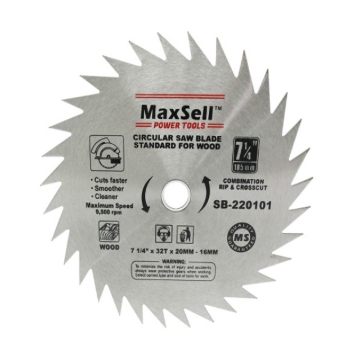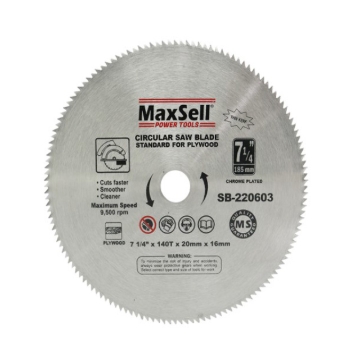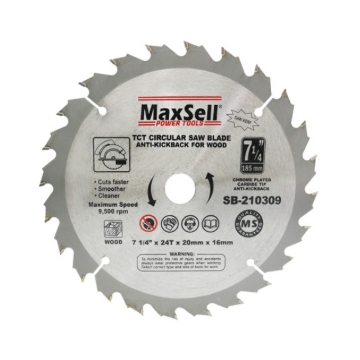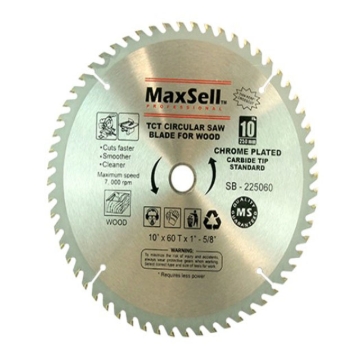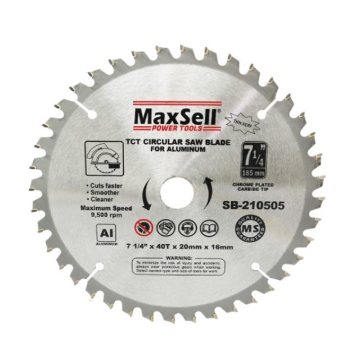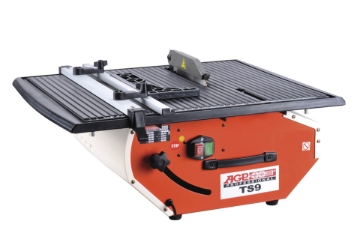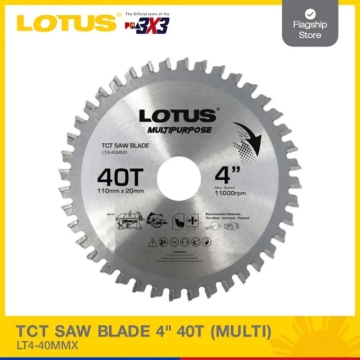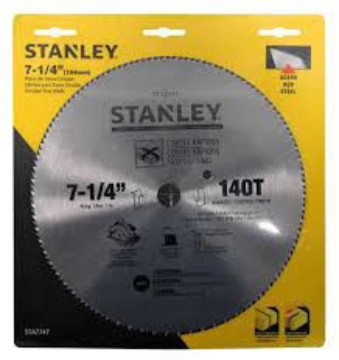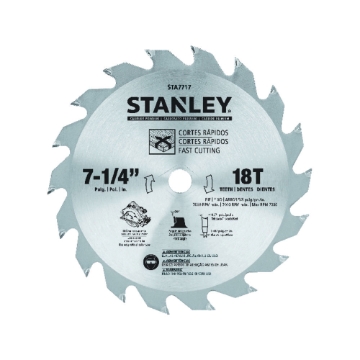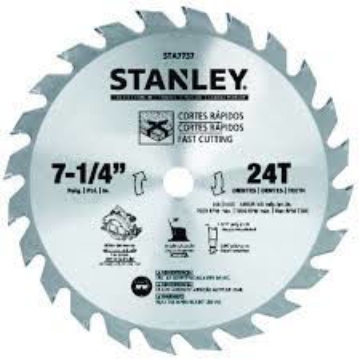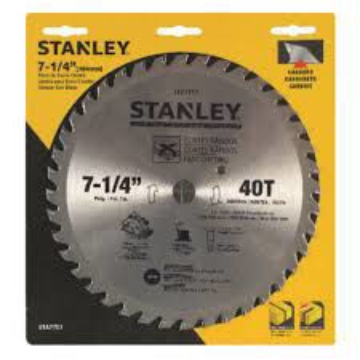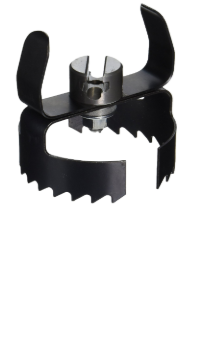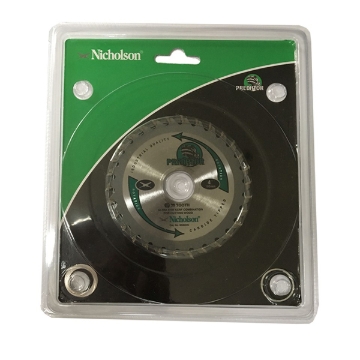Saw Blade
MaxSell Combination of RIP and Cross Cut (Circular Saw Blade), SB-220101
SB-220101
MaxSell Combination of RIP and Cross Cut (Circular Saw Blade)
₱779.00
MaxSell Standard (Circular Saw Blade) for Plywood, SB-220603
SB-220603
MaxSell Standard (Circular Saw Blade) for Plywood
₱820.00
MaxSell TCT-Anti Kickback (Circular Saw Blades), SB-210309
SB-210309
MaxSell TCT-Anti Kickback (Circular Saw Blades)
From ₱699.00
MaxSell TCT-Standard (Circular Saw Blades) for Wood, SB-210040
SB-210040
MaxSell TCT-Standard (Circular Saw Blades) for Wood
From ₱399.00
MaxSell TCT-Standard (Circular Saw Blades), SB-210505
SB-210505
MaxSell TCT-Standard (Circular Saw Blades)
From ₱799.00
Nicholson Circular Saw Carbide Tip for Wood (10" x 30T)
NicSaw
Circular Saw Carbide Tip for Wood (10" x 30T)
From ₱290.00
Stone Cutting Circular Saw Without 7" Diamond Blade SCS7
SCS7
Stone Cutting Circular Saw Without 7" Diamond Blade
₱59,200.00
Stanley Circular Saw Blade Carbide Teeth 140T x 7-1/4
STSTA7747AE
STANLEY CIRCULAR SAW BLADE CARBIDE TEETH 140T X 7 - 1/4
₱705.00
Stanley Circular Saw Blade Carbide Teeth 18T x 7 1/4
STSTA7717AE
STANLEY CIRCULAR SAW BLADE CARBIDE TEETH 18T X 7-1/4"
₱755.00
Stanley Circular Saw Blade Carbide Teeth 24T x 7-1/4
STSTA7737AE
STANLEY CIRCULAR SAW BLADE CARBIDE TEETH 24T X 7-1/4
₱880.00
Stanley Circular Saw Blade Carbide Teeth 40T x 7-1/4"
STSTA7757AE
STANLEY CIRCULAR SAW BLADE CARBIDE TEETH 40T X 7-1/4"
₱1,005.00
MaxSell Continuous Rim (Diamond Blades) for Wet Cutting, MCD-4-5-7-8
MCD-4-5-7-8
MaxSell Continuous Rim (Diamond Blades) for Wet Cutting
From ₱469.00
MaxSell Straight Cutting U-Shank Jigsaw Blades for Wood, MSA-120
MSA-120
MaxSell Straight Cutting U-Shank Jigsaw Blades for Wood
₱109.00
MaxSell Fast Straight and Fast Curve Cutting U-Shank Jigsaw Blades for Wood, MJB-1190
MJB-1190
MaxSell Fast Straight and Fast Curve Cutting U-Shank Jigsaw Blades
₱104.00
MaxSell Straight and Curve Cutting U-Shank Jigsaw Blades for Metal, MJB-1222
MJB-1222
MaxSell Straight and Curve Cutting U-Shank Jigsaw Blades
₱119.00
Stanley Snap-Off & Quick Point Blades STHT11325-8Q-ST11325
ST11325
Snap-Off & Quick Point Blades
₱590.00
Stanley Spokeshave-Blade For Boxed - ST12336
ST12336
SPOKESHAVE-BLADE FOR BOXED 45MM/1-3/4"
From ₱300.00
Recently viewed products
-
Stanley Jigsaw STSTEL345
-
LOTUS Jigsaw Blade Bi-Metal LT101BF
-
Philips ESS LED MR16 3-35W 36D
-
Argo CIRCULAR SAW 190MM/7.5 4700RPM, ARGMTCS1400
-
Nicholson Fiberglass Claw Hammer 16oz
-
Ridgid Hepa Filter (Green) - VF6000 - Genuine Replacement 5-Ply Wet/Dry Allergen Fine Dust & Dirt Filter for Ridgid 5-20 Gallon Vacuums, 97457
-
COOFIX HEAT GUN
-
MASTER LOCK BRASS PADLOCK 4 KEYED ALIKE 20MM HARD STEEL SHACKLE
-
AIR COOLED DIESEL ENGINE BLACK SERIES-BS-170F
-
Stanley Closed Fiberglass Long Tape 30m/100' ft -STSTHT342628

